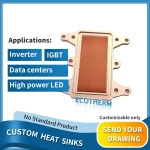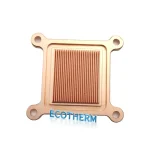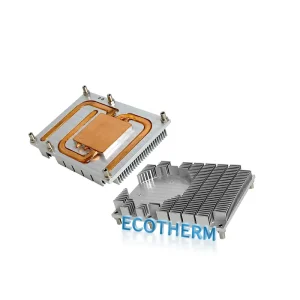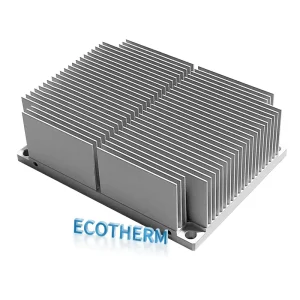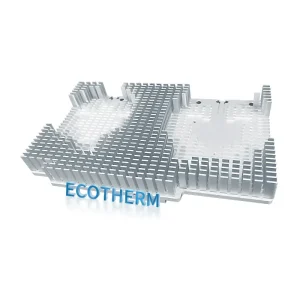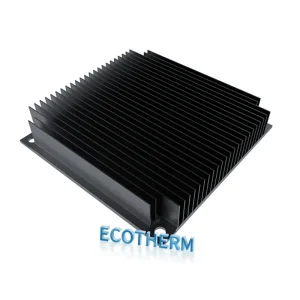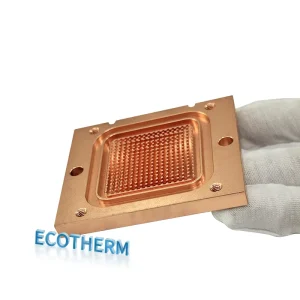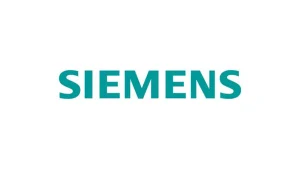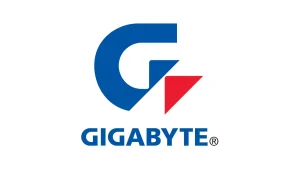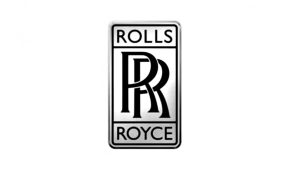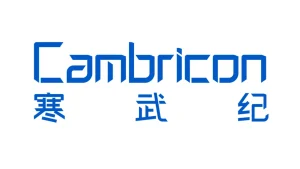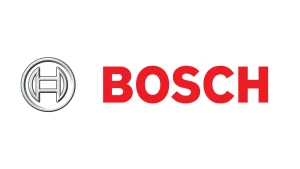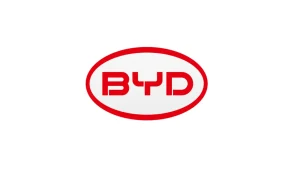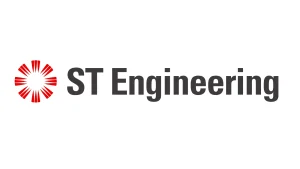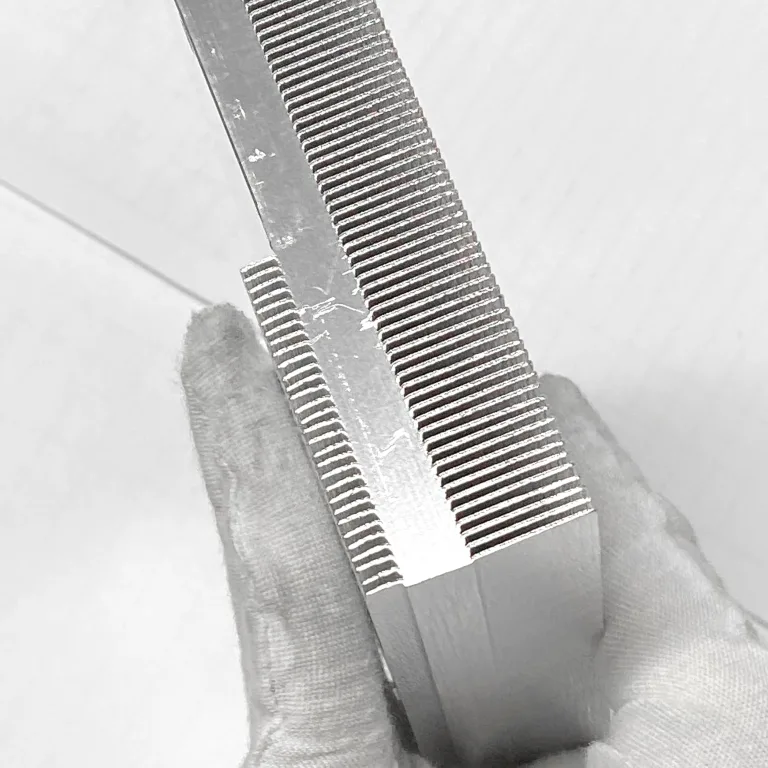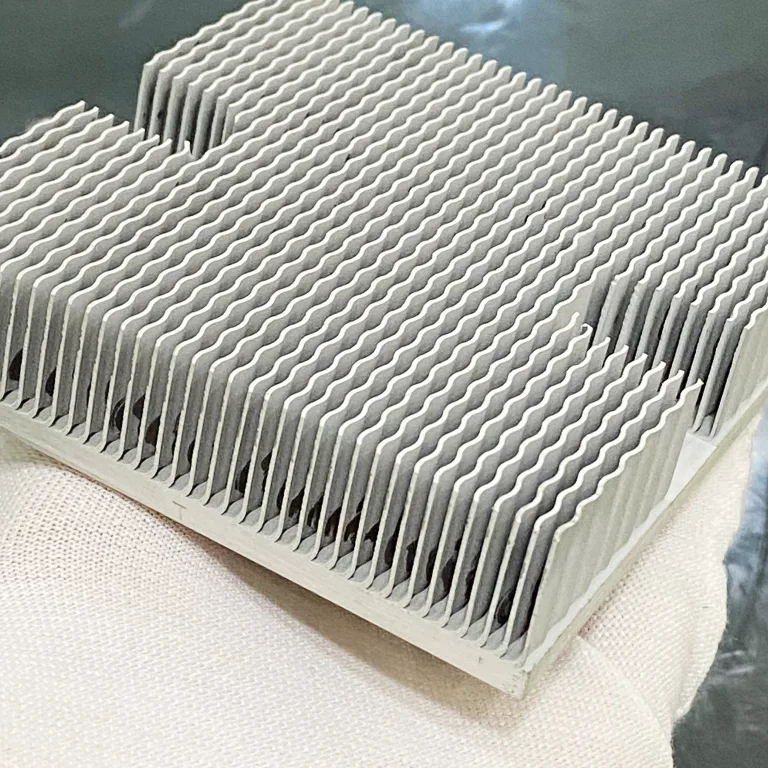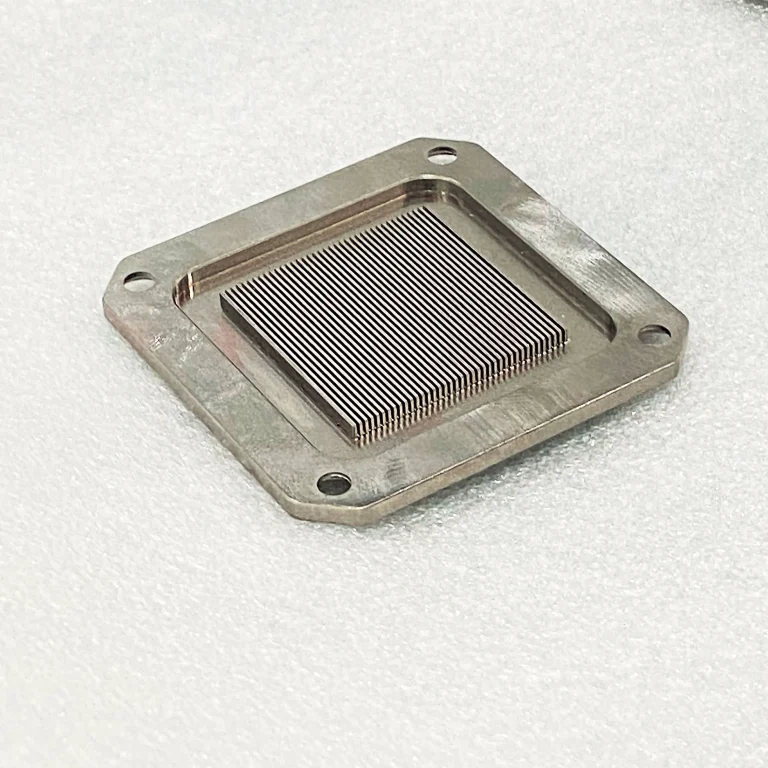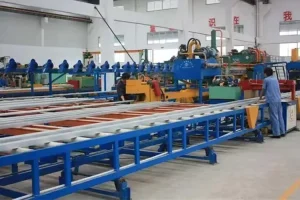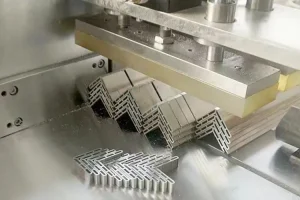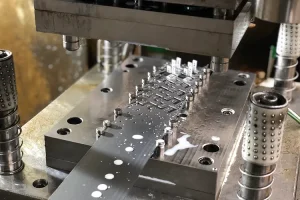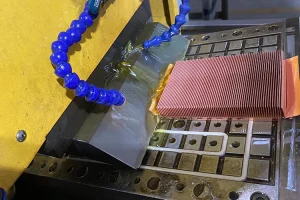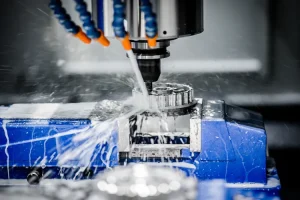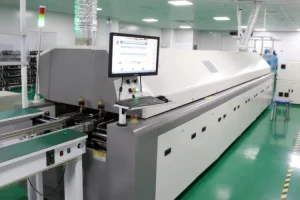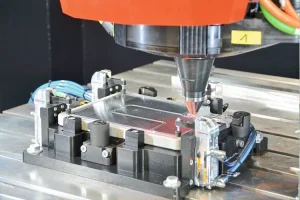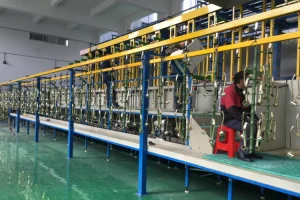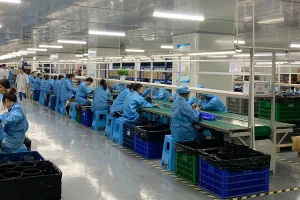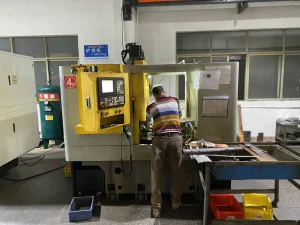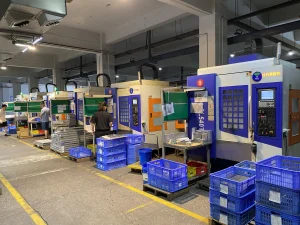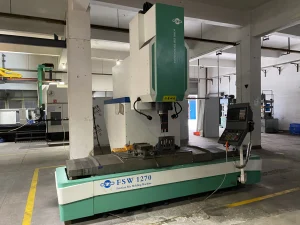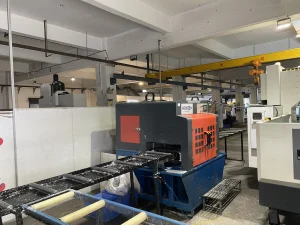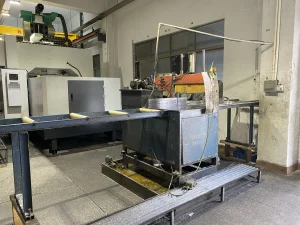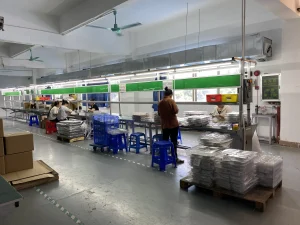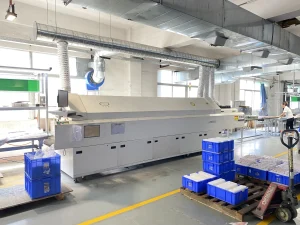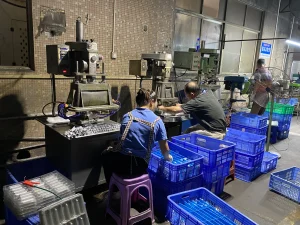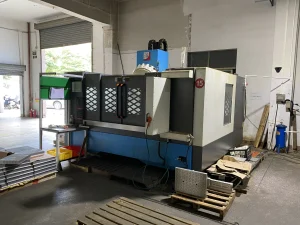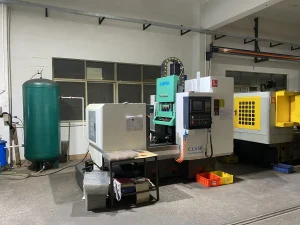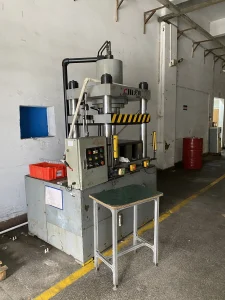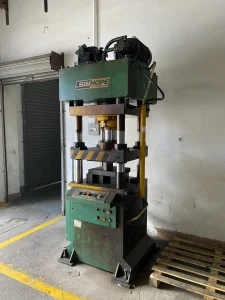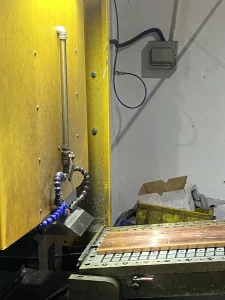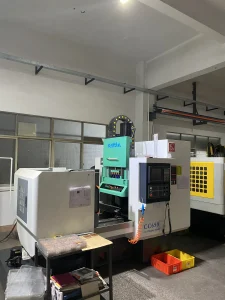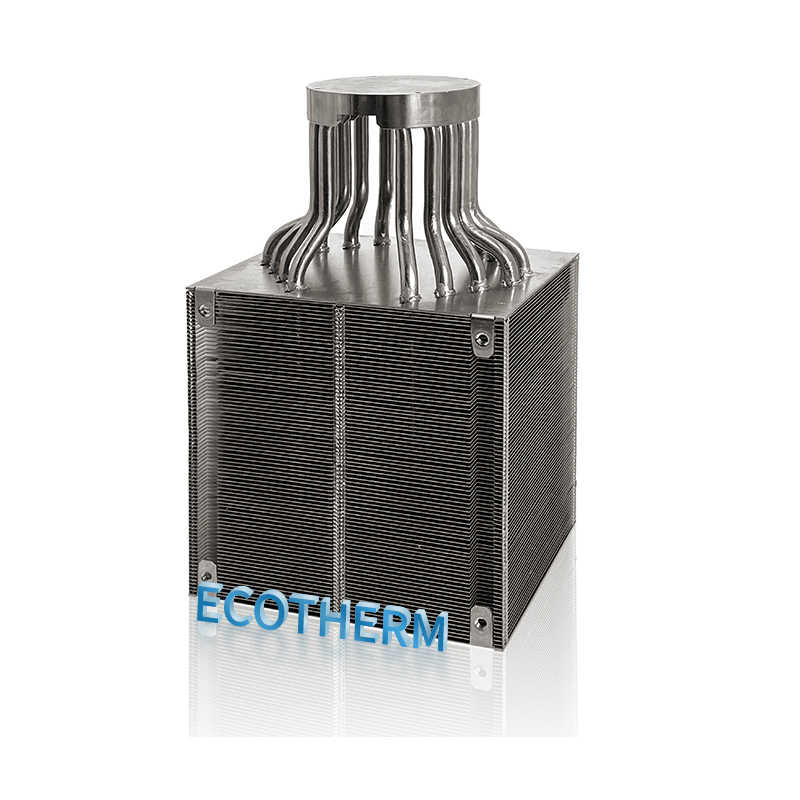1. Core Material: High-Purity Copper for Superior Thermal Conduction
This heat sink is constructed entirely from high-purity copper, a material renowned for exceptional thermal conductivity. Unlike aluminum heat sinks, pure copper can quickly absorb heat from heat sources (such as chips, power modules, or LED components) and transfer it to the fin structure without significant thermal loss. The dense molecular structure of pure copper also ensures long-term thermal stability—even in continuous high-temperature operating environments, it won’t degrade in heat conduction performance, laying a solid foundation for efficient cooling.
2. Key Craftsmanship: Skiving Technology for Optimized Heat Dissipation
The fins of the pure copper skived heat sink are manufactured via advanced skiving 工艺,a one-piece forming method that eliminates assembly gaps common in traditional bonded or extruded heat sinks. During skiving, a precision tool slices the copper base to create thin, dense, and uniformly arranged fins—this integrated structure ensures direct, unobstructed heat transfer from the base to the fins, avoiding heat loss caused by interface resistance.
Additionally, the skiving process allows flexible adjustment of fin shape (such as straight fins or slightly curved fins) and arrangement density according to specific cooling needs. The thin, high-density fins maximize the heat sink’s contact area with air, accelerating convective heat exchange and enabling faster heat dissipation even in limited space.
3. Practical Design: Stable Installation & Durable Surface Treatment
To adapt to different device installation requirements, the pure copper skived heat sink is often equipped with practical structural designs:
- Fixed installation features: Common designs include pre-drilled screw holes (e.g., at the four corners or edge positions) that allow direct, secure attachment to heat sources or device casings via screws. This avoids looseness caused by vibration (critical for industrial or automotive electronics) and ensures tight contact between the heat sink and the heat source.
- Anti-oxidation surface treatment: Pure copper is prone to oxidation over time, which can reduce thermal conductivity. Thus, the surface of this heat sink typically undergoes anti-oxidation treatment—such as nickel plating or passivation. These treatments form a thin, protective layer on the copper surface, preventing rust and oxidation while maintaining the material’s original thermal performance, significantly extending the heat sink’s service life.

